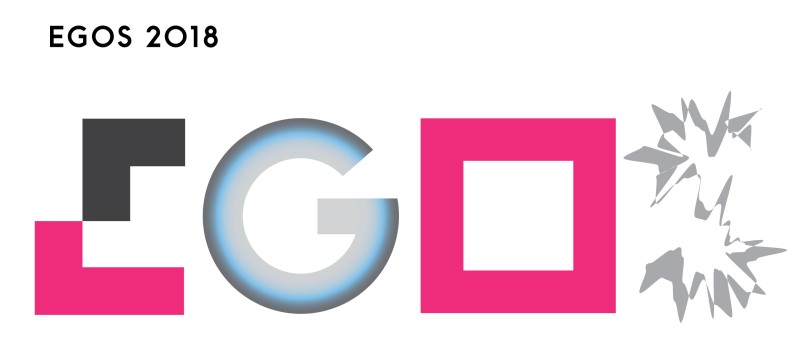Sub-theme 10: [SWG] Shock and Surprise: Responses to the Unexpected, the Deviant and the Stigmatized in Social Life
Call for Papers
Organizations breaking with social and institutional norms can surprise and even shock audiences, provoking strong positive
or negative emotional reactions (Toubiana & Zietsma, 2017; Creed et al., 2014; Voronov & Vince, 2012). Societies typically
punish organizational deviance and transgression by stigmatizing and sanctioning the organization and its members. As a result,
organizational stigma, and other negative social evaluations, have emerged as an important topic in organizational theory.
Stigma, which is a discrediting perception held by some evaluative audience, is often linked to the feelings it engenders
on the part of both stigmatizers and those stigmatized (Goffman, 1963).
However, stigmatized organizations
and members do not always accept the attempts to be shamed (Creed et al., 2014), and these attempts may prompt them to resist
and transform the social and institutional arrangements that relegate them with this inferior status. In this way, deviance
can be the genesis of social transformation. Many products and services that are now accepted were once seen as deviant, and
their proponents stigmatized (Hampel & Tracey, 2016). Yet in our continued efforts to better understand the nature of
stigma (Devers et al., 2009; Hudson, 2008) and responses to it (Hampel & Tracey, 2016; Helms & Patterson, 2013; Hudson
& Okhuysen, 2009), the role of emotions in these dynamics has been neglected.
This sub-theme invites
scholarly discussion on the ways in which emotions and deviance interact to impact varied organizational and institutional
dynamics, and the ways in which emotional work may be related to efforts at managing stigma. We focus specifically on the
social and collective emotional responses and motivations that underlie and drive collective action, organizational responses,
and institutional recreations and reconfigurations as a result of the deviant, unexpected or stigmatized.
The
following are examples of questions that this subtheme will explore:
Given the strong tendency of emotions to facilitate the ongoing reproduction of social order (Stavrakakis, 2008), how do the emotional connections get disrupted and lead to deviance?
What are the emotional mechanisms that underpin stigmatization, and what causes stigmatization to strengthen or erode?
How do social emotions inform and motivate sensemaking and action in response to perceptions of dirty work?
What role do social and collective emotions play in both the spread of and reaction to stigma?
How does the rejection or embracement of negative social evaluations and collective social emotions motivate collective action that transforms deviance into positive social innovations?
How is emotion implicated in positive identity construction - both at the individual level and the organizational or collective level? Specifically, how might studying emotion enhance our understanding of dirty work?
How do negative social emotional responses such as despair, rage, indignation, and resentment due to stigmatization and marginalization lead to empowerment, institutional work, and social innovation?
References
- Creed, W.E.D., Hudson, B.A., Okhuysen, G.A., & Smith-Crowe, K. (2014). “Swimming in a sea of shame: incorporating emotion into explanations of institutional reproduction and change.” Academy of Management Review, 39 (3), 275–301.
- Devers, C.E., Dewett, T., Mishina, Y., & Belsito, C.A. (2009): “A general theory of organizational stigma.” Organization Science, 20, 154–171.
- Goffman, E. (1963): Stigma: Notes of the Management of Spoiled Identity. New York: Simon & Schuster.
- Hampel, C.E., & Tracey, P. (2016): “How organizations move from stigma to legitimacy: The case of Cook's travel agency in Victorian Britain.” Academy of Management Journal, published online before print April 18, 2016, doi: 10.5465/amj.2015.0365.
- Helms, W., & Patterson, K. (2013): “Eliciting acceptance for 'illicit' organizations: The positive implications of stigma for MMA organizations.” Academy of Management Journal, 57 (5), 1453–1484.
- Hudson, B.A. (2008): “Against all odds: A consideration of core-stigmatized organizations.” Academy of Management Review, 33, 252–266.
- Hudson, B.A., & Okhuysen, G.A. (2009): “Not with a ten-foot pole: Core stigma, stigma transfer, and improbable persistence of men's bathhouses.” Organization Science, 20 (1), 134–153.
- Stavrakakis, Y. (2008): “Subjectivity and the organized other: Between symbolic authority and fantasmic enjoyment.” Organization Studies, 29 (7), 1037–1059.
- Toubiana, M., & Zietsma, C. (2017): “The message is on the wall? Emotions, social media and the dynamics of institutional complexity.” Academy of Management Journal, 60 (3), 922–953.
- Voronov, M., & Vince, R. (2012): “Integrating emotions into the analysis of institutional work.” Academy of Management Review, 37 (1), 58–81.


